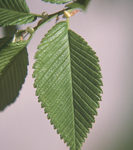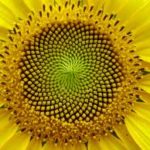Patterns in Leaves and Flower Petals
Many, many months ago, I wrote an Afternoon Snack (re)introducing Fibonacci to the Early Math Counts readers. Since we are looking at flowers as a theme for teaching mathematical concepts, I thought we could revisit the idea that there are patterns that occur in nature if we simply look for them.
Fibonacci (re)discovered that the patterns we see in nature are based on a fairly simple mathematical sequence.
Look at this number sequence.
0, 1, 1, 2, 3, 5, 8, 13, 21, 34, 55,
Take the first two numbers and add them together…
0 + 1 = 1
Add that result to the next number…
1 + 1 = 2
Take that result and add it to the next number….
2 + 3 = 5
And, again…
5 + 8 = 13
and so on….
The flower pictured above has petals that appear in a pattern that is based on the Fibonacci sequence.
You can have children explore different aspects of leave patterns and flower petal patterns when you bring in a variety of plants into the classroom. In no way do I think children will see the sophisticated patterns in the flower above, but they may notice if leaves are symmetrical, or asymmetrical.
Large sunflower heads, complete with their sunflower seeds still intact are great to bring into the classroom. You can have children look at the patterns that are created by the seeds and the petals. Later, using tweezers, children can pull out the seeds to take a closer look at them under a microscope.




I like the sunflower idea for patterns
Great ideas for making patterns. I like to lamintate my leaves and keep them in the science center for the children to explore with magnifying glasses. The Fall is a great time to incorporate nature in lesson planning.
What a great idea to laminate the leaves. It will show patterns so much better than a rubbing.
Love this idea. Going to use this with my toddlers with handing them the different color petals
Can’t wait to use the flowers that are blooming in my yard to show the children all the different ways we can see patterns!
Excellent, we can connect nature and math with patterns.
Great Idea!
It is interesting because it can be at a variety of levels.
There are many great opportunities to explore patterns with children in the neighborhood.
Teachers can take their children on walks to visible see different patterns in the leaves.